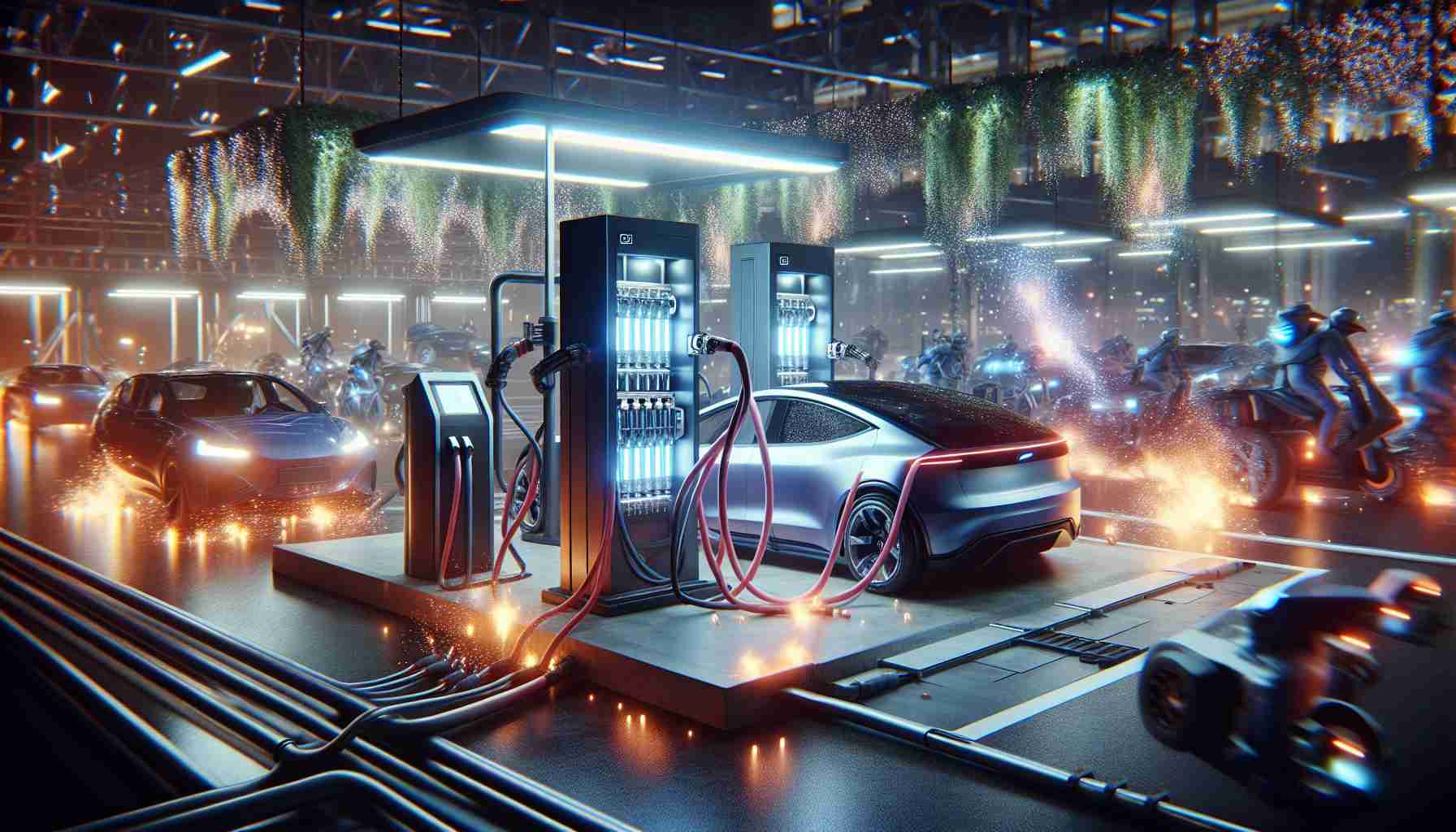SAIC Teams Up with CATL for Revolutionary Battery Swap Solutions
In a groundbreaking move for electric vehicle (EV) technology, SAIC, the manufacturer of MG cars, has entered a strategic partnership with CATL, the world’s leading battery producer. This collaboration focuses on integrating CATL’s innovative Choco-SEB battery swap stations with SAIC’s future EV models, completely shifting away from SAIC’s previous battery swap initiative.
The agreement was formalized during a ceremony at CATL’s headquarters in Ningde, with both chairman’s present to highlight the significance of this partnership. SAIC will concentrate on creating electric vehicles designed to accommodate swappable batteries, while CATL takes charge of engineering standardized batteries for enhanced compatibility.
SAIC had previously ventured into the battery swap arena in 2022, intending to rival Nio. However, the lackluster performance of its Rising-branded vehicles, with sales barely reaching 67,000 units, stalled the growth of their battery swap stations, manageable at only 26 by 2024.
As CATL rolls out its second-generation Choco-SEB batteries, designed for impressive range and efficiency, plans include constructing 1,000 swap stations by 2025, ultimately expanding to 30,000. These battery swap stations are set to revolutionize how drivers recharge their vehicles, promising a swift swap time of just 100 seconds and a cost-effective subscription model. This partnership signals a promising shift in the EV landscape, enhancing user convenience and market competitiveness.
Revolutionizing EV Charging: SAIC and CATL’s Game-Changing Partnership
Introduction
The electric vehicle (EV) market is witnessing a transformative shift as SAIC, the manufacturer behind MG cars, collaborates with CATL, the preeminent battery producer globally. This innovative partnership aims to revolutionize battery swap technology, enhancing user convenience and introducing new features that could set a new standard in the EV industry.
Features of the New Battery Swap Solution
1. Standardization of Swappable Batteries: One of the core aspects of this collaboration is the development of a standardized battery system. This will allow various EV models from SAIC to utilize the same battery packs, facilitating easier integration and compatibility across different vehicles.
2. Rapid Swap Technology: The Choco-SEB battery swap stations are designed to perform a battery change in just 100 seconds, making this option faster than traditional charging methods. This efficiency addresses range anxiety for EV drivers, providing a seamless experience.
3. Subscription Model: The partnership plans to introduce a cost-effective subscription service for battery swaps. Users can pay a monthly fee for access to swappable batteries without the need for a significant upfront investment, making EV ownership more accessible.
Pros and Cons
Pros:
– Quick Recharging: The 100-second battery swap significantly reduces downtime compared to standard charging options.
– Increased Convenience: With standardized batteries, EV drivers can easily find stations compatible with their vehicles, enhancing the overall user experience.
– Environmental Sustainability: By optimizing battery usage and promoting renewable energy sources, this initiative aligns with eco-friendly goals.
Cons:
– Initial Infrastructure Costs: Building thousands of battery swap stations requires substantial investment.
– Dependence on Subscription: Some consumers may prefer ownership over a subscription model, which could limit initial adoption.
– Market Competition: Competing against established models from companies like Nio may prove challenging despite the innovative offering.
Use Cases
1. Urban Commuters: For individuals in city environments where charging stations might be sparse, quick-access battery swaps present a vital solution to daily commuting needs.
2. Fleet Operations: Delivery and service fleets can make use of battery swap stations to maintain vehicle uptime, improving overall operational efficiency.
3. Long-Distance Travel: For trips beyond the range of typical EV batteries, frequent swap stations enable longer journeys without the anxiety of finding a charging station.
Market Trends and Insights
The collaboration between SAIC and CATL is reflective of a broader trend in the EV industry towards battery swapping as a viable alternative to traditional charging. As more manufacturers explore this technology, market research indicates a potential increase in user adoption, especially as concerns about charging times and infrastructure grow.
Innovations on the Horizon
CATL’s second-generation Choco-SEB batteries promise not only greater energy density but also enhanced safety features, including improved thermal stability and battery life. These advancements could make battery swapping even more appealing as technology continues to evolve.
Security Aspects
With the integration of new technologies, the security of electric vehicle systems remains paramount. Both SAIC and CATL are likely to implement advanced cybersecurity measures to protect user data and vehicle integrity, ensuring that the battery swap system poses no risk to drivers.
Conclusion
The partnership between SAIC and CATL heralds a new era in EV battery technology. By focusing on swappable batteries, rapid swap stations, and a user-friendly subscription model, they aim to enhance the electric vehicle experience and contribute significantly to the industry’s future. This innovative approach not only addresses current issues but also aligns with the growing demand for sustainable transportation solutions.
For more insights into electric vehicle technology and advancements, visit SAIC Motor and CATL.














